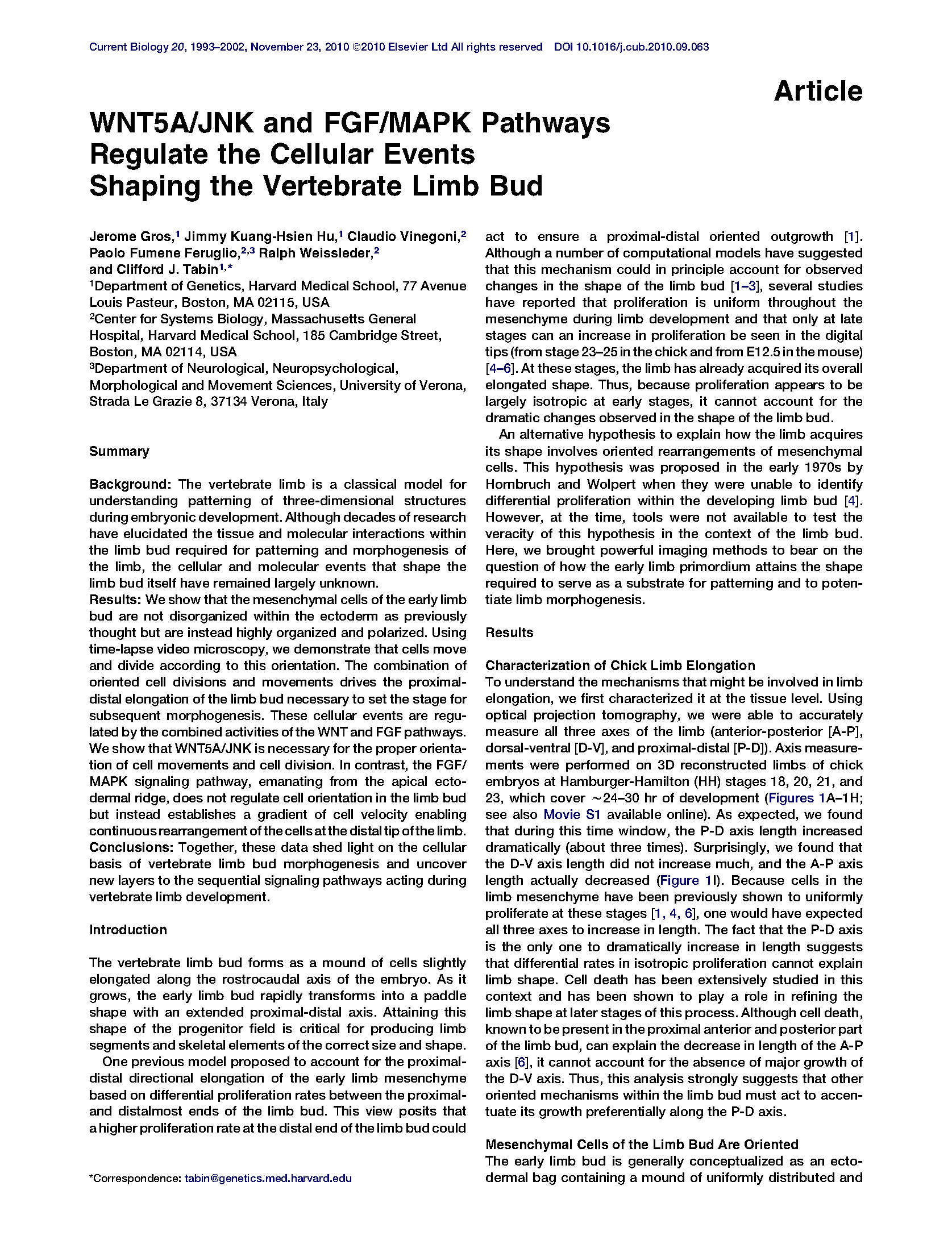WNT5A/JNK and FGF/MAPK Pathways Regulate the Cellular Events Shaping the Vertebrate Limb Bud
Current Biology
Abstract
"Background The vertebrate limb is a classical model for understanding patterning of three-dimensional structures during embryonic development Although decades of research have elucidated the tissue and molecular interactions within the limb bud required for patterning and morphogenesis of the limb, the cellular and molecular events that shape the limb bud itself have remained largely unknown Results We show that the mesenchymal cells of the early limb bud are not disorganized within the ectoderm as previously thought but are instead highly organized and polarized Using time-lapse video microscopy, we demonstrate that cells move and divide according to this orientation The combination of oriented cell divisions and movements drives the proximaldistal elongation of the limb bud necessary to set the stage for subsequent morphogenesis These cellular events are regulated by the combined activities of the WNT and FGF pathways We show that WNT5A/JNK is necessary for the proper orientation of cell movements and cell division In contrast, the FGF/MAPK signaling pathway, emanating from the apical ectodermal ridge, does not regulate cell orientation in the limb bud but instead establishes a gradient of cell velocity enabling continuous rearrangement of the cells at the distal tip of the limb Conclusions Together these data shed light on the cellular basis of vertebrate limb bud morphogenesis and uncover new layers to the sequential signaling pathways acting during vertebrate limb development"
Full citation
For attribution in academic contexts, please cite this work as:
| Gros, J., Hu, J. K. H., Vinegoni, C., Fumene Feruglio, P., Weissleder, R., & Tabin#, C. J. (2010). WNT5A/JNK and FGF/MAPK Pathways Regulate the Cellular Events Shaping the Vertebrate Limb Bud. Current Biology, 20(22), 1993–2002. https://doi.org/10.1016/j.cub.2010.09.063 |

Gros, J., Hu, J. K. H., Vinegoni, C., Fumene Feruglio, P., Weissleder, R., & Tabin#, C. J. (2010). WNT5A/JNK and FGF/MAPK Pathways Regulate the Cellular Events Shaping the Vertebrate Limb Bud. Current Biology, 20(22), 1993–2002. https://doi.org/10.1016/j.cub.2010.09.063